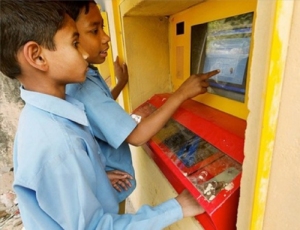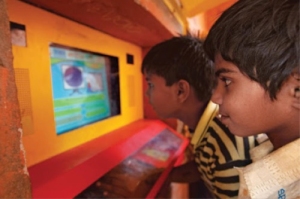This article is thought-provoking; raising questions, issuing challenges and suggesting solutions. Teaching philosophy in schools is one of those suggestions with which I wholeheartedly agree.
I reblog this article in celebration of World Philosophy Day, the third Thursday in November.
I have also referred to this article in my post “SOLE man”
In his renowned ‘Hole in the Wall’ experiments in developing countries, Dr Sugata Mitra gave children access to an internet-connected computer and left them to learn what they could, unsupervised, with apparently remarkable results.
At an internet kiosk in a New Delhi slum, local children figured out how to search the Web, learned English, gleaned information from a variety of websites and taught each other what they had learned. Similarly, with access to a streetside computer in a south Indian village, Tamil-speaking kids managed to figure out basic principles of DNA replication by playing around with English-language web material on their own. ‘Minimally invasive education’ is how Dr Mitra describes this method, alluding to the high-impact, low-disruption techniques of minimally invasive medicine.
Hole in the Wall: Minimally Invasive Learning Stations designed by Dr Sugata Mitra. Top photo: source unknown. Bottom photo by Philippe Tarbouriech, Jaipur, Rajasthan.
This novel educational approach has garnered…
View original post 1,797 more words




Fascinating! I love when people take education outside the traditional box like this.
LikeLike
Thanks for visiting and commenting Maryanne. I do too!
LikeLike